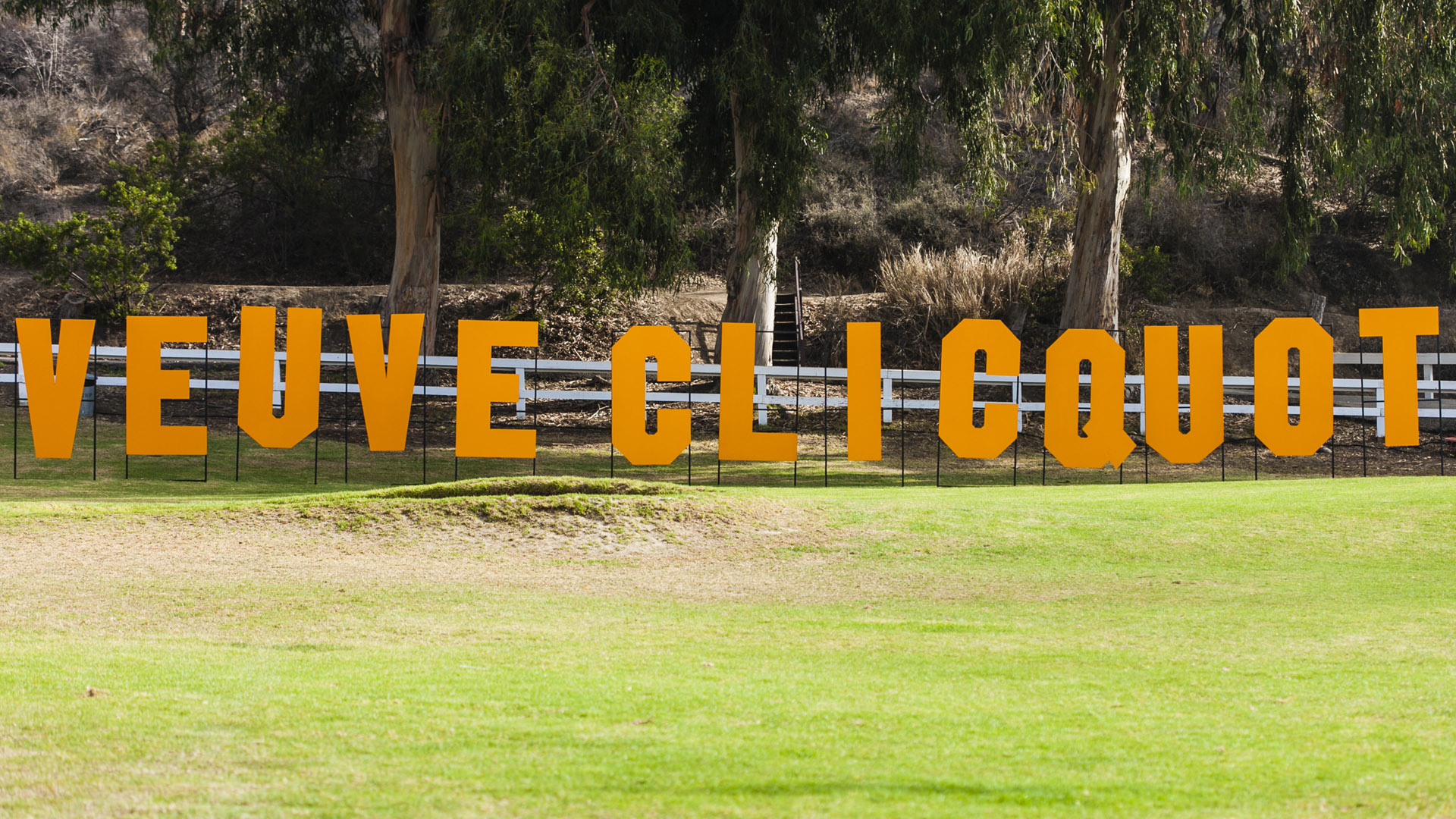“After seeing kids play polo against big guys, it only shows that horses are the greatest equalizer in the world. No matter what you weigh, the little fellow is your equal on a horse.”—Will Rogers
I knew I was in over my head when I couldn’t even pronounce the name of the champagne brand hosting the polo match.
Before this warm Saturday in Los Angeles, my experience with true champagne—stuff made in the appropriate region of France, not just the bubbly wine one orders on special occasions to feel extravagant—was limited at best. But since I was attending the fifth annual Veuve Clicquot Polo Classic at Will Rogers State Historic Park, I knew that I needed to at least be able to feign knowledge about the fancy drinks I would be imbibing. After a bit of Internet “research” and mirror-rehearsals, I was ready to go and explore an age-old sport still played practically in my own backyard. (And it’s pronounced “voo-vuh click-co,” in case you were wondering.)
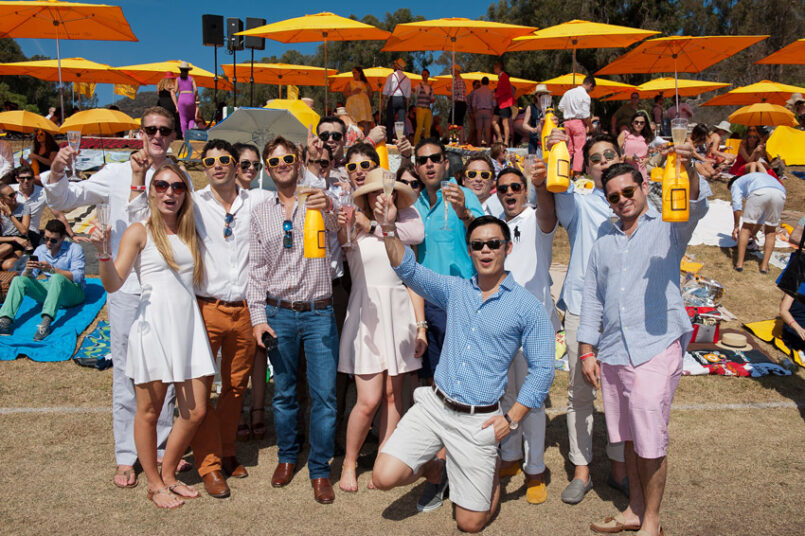
Promotional sunglasses and champagne koozies for all! / photo by Claire Stern
Rogers, the vaudevillian-cowboy namesake of the event’s venue, was an avid polo and horse enthusiast along with Walt Disney and Clark Gable. While a shared love of the one-thousand-pound animals seemed to be ample at the classic, it became clear that most of the people here were part of a sacred scene tradition, with the actual match merely being a backdrop for their partying. Swaths of ten and twenty people swarmed the games and photo-op zones—all clutching enough popped bottles to floor a polo pony. Most spectators squealed about their new outfits and accessories (including the surprisingly practical champagne flute holders), and proceeded to get plastered with their nearest and dearest. I had stumbled upon an alternate universe’s Coachella.
There is no fence separating you from the game. Watching the horses run at full speed felt more impressive and powerful than when I’ve lost money at Santa Anita.
I started the match with a flute of Veuve’s iconic “yellow label.” I appreciated how full the flute was considering I had just shelled out $20 for this bad boy. It was everything one would want in a glass of champagne: light, fruity, and not too sweet. I could see why this delightful liquid would warrant an entire party.
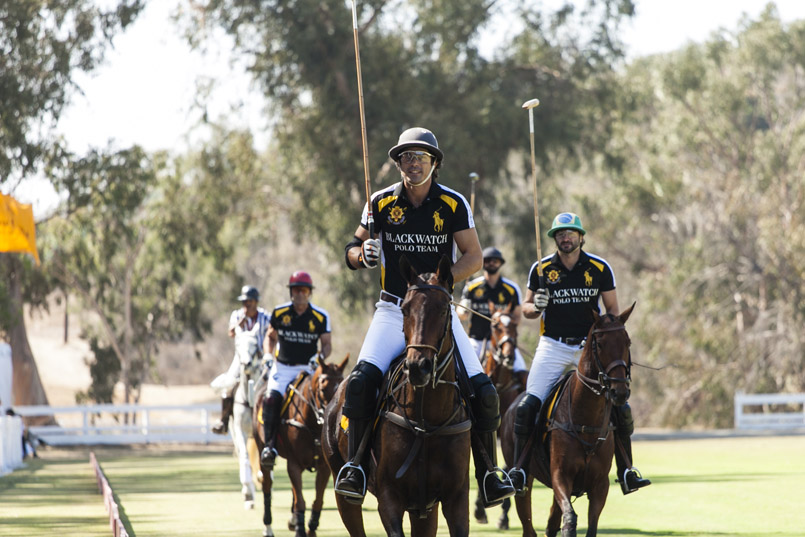
Black Watch takes the field, lead by Nacho Figueras / photo by Jesse Carmody
While the cracks in the event’s fancytown façade had already begun to show when I noticed one “gentleman” in the crowd sporting non-luxury sweatpants, I still wanted to enjoy the Veuve dream world. That meant watching six chukkers (seven-minute periods) of some world-class polo, with Christina Hendricks (Mad Men) tossing out the ceremonial first ball. As a polo neophyte, I tried to understand the rules of the ancient game—first invented in Asia around the fifth or sixth century—in terms of other sports that have actually permeated my brain. From watching hockey with my father I understood line changes, penalty shots, and trying to whack a tiny round object through goal posts. Unlike most mainstream sports, though, there are no set team zones in polo; the action is always shifting directions, ensuring that no spectator could get bored. The game is simple, fast, and elegant. No wonder we’re always seeing photos of Princes William and Harry playing in the traditional white pants and equestrian garb.
Suddenly I was again a lowly Have-Not within an event designed entirely for the Haves. If polo players were deemed equal atop their steeds, why weren’t viewers seen as equal in the eyes of the lawn?
The first thing you notice when attending a polo match is how close you are to the action. There is no fence separating you from the game. Watching the horses run at full speed felt more impressive and powerful than when I’ve lost money at Santa Anita. The ground vibrated every time they galloped towards the edge of the field, reacting to each loud crack of the plastic sphere. It was hard to imagine the intense training that must happen to ensure that the rider and mount work together to follow the imaginary “line of the ball” to stay safe and inbounds.
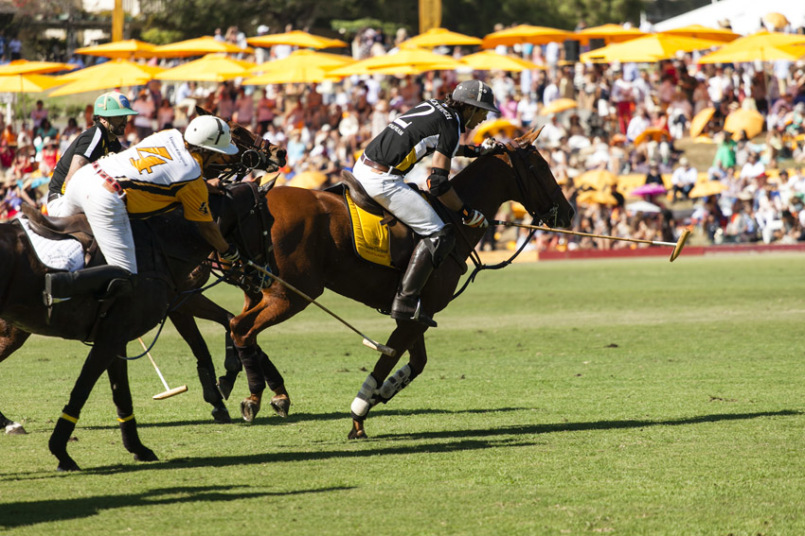
photo by Jesse Carmody
The other unique facet of this former Olympic sport is that it’s one of the only games to allow the spectators to actually walk onto the field. At halftime, we were encouraged to dance, drink, and be merry while ceremoniously filling in hoof divots. Normally, this action guarantees a trip to jail and a lifetime ban at a major sporting event. I decided to take this opportunity very seriously. It was all fun and games until I noticed that there was a giant rope line separating the VIP and GA divot-fillers. Suddenly I was again a lowly Have-Not within an event designed entirely for the Haves. If polo players were deemed equal atop their steeds, why weren’t viewers seen as equal in the eyes of the lawn?
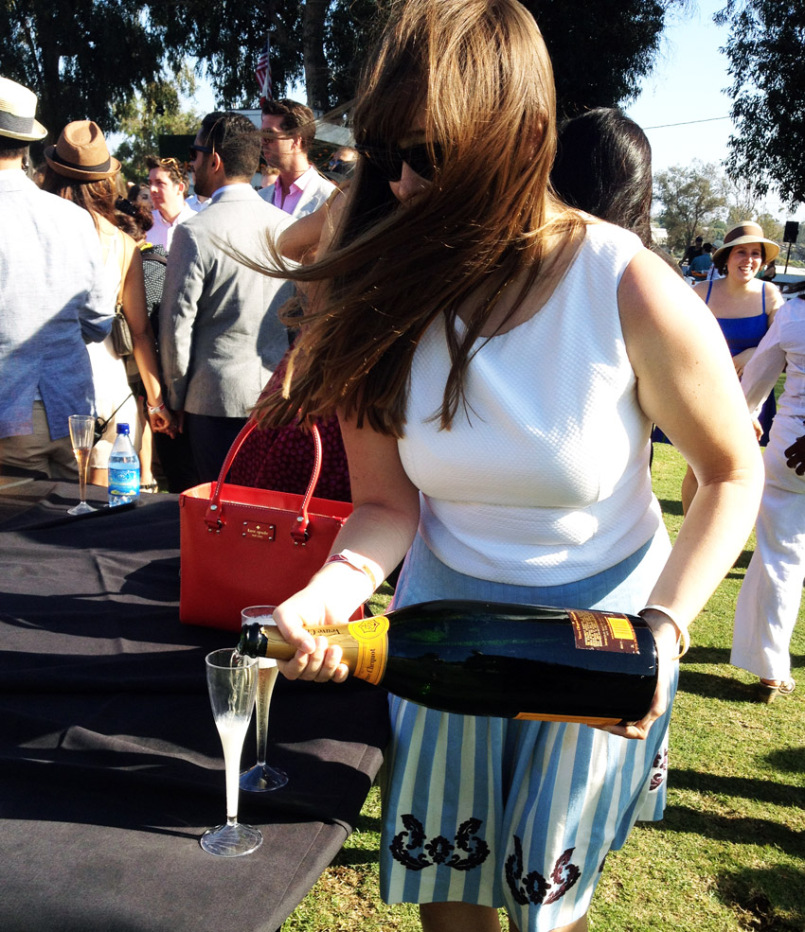
The author taking advantage of the victory vibes. / photo by Angelica Corona
The returning champions, Black Watch, beat the Veuve home team by the final score of 10 to 7. The players celebrated by riding around the edges of the field and high-fiving everyone with their damp gloves. We gathered to watch the trophies presented to the winning team’s dashing captain—simply known as “Nachooooooo” to the crowd—as the team sprayed champagne magnums upon the multitude in celebration. Hoots and hollers rose, ensembles were stained, and selfies were taken. Before the horde dissipated I noticed that one of the squad’s bottles was still quite full, and thought it would be a shame if it went to waste. The larger-than-normal vessel was heavy, but after helping myself, I too felt like I was part of the team: slightly drunk, really sunburned, and a little sweaty.
But isn’t that the endgame for all sporting events? To bring a bunch of crazily dressed people together to shout at professionals, watch in awe as they perform, and cheer when they succeed? In one afternoon at the country’s thirteenth-oldest polo club, I became a fan of the game, but don’t expect to see me painting my face anytime soon. This is still polo, after all. Show a little class. FL

